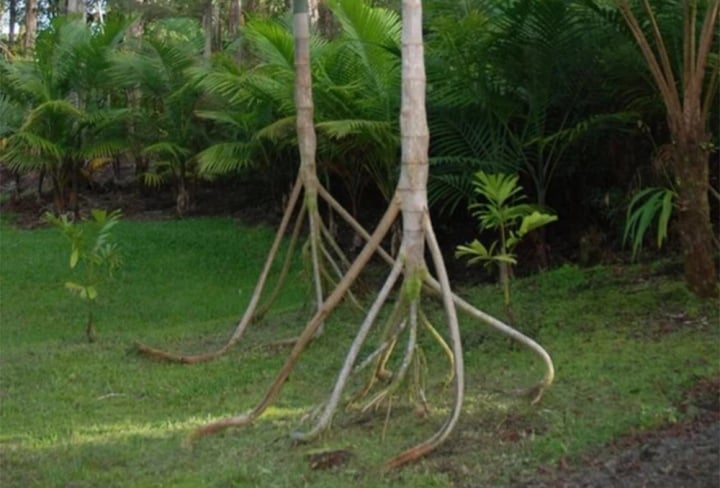Anyone who has ever seen a Venus flytrap swallow insects and even mammals whole knows that plants can sometimes perform some very un-plant-like behaviors. Socratea exorrhiza, or the “walking plant,” is one such plant.
Unique tree species that can "walk"?
The walking palm, Socratea exorrhiza, is a type of palm found in the rainforests of Latin America. Locals believe that this unique species has evolved over time to have an unusual trait – it can “walk” across the forest floor. This movement helps the tree disperse its seeds away from the mother tree, giving them more room to grow and thrive.
According to tour guides, the walking tree uses aerial roots located near its base as support structures to stabilize itself as it moves around. These specialized root systems act like legs or tentacles, allowing it to slowly move up to several dozen meters per year. When these roots come into contact with new soil, they latch on and begin to grow into larger support structures that propel the tree forward faster than before.
Many locals say the plant can “walk” 2 or 3cm per day, or 20m per year. Socratea exorrhiza sends out new roots in the direction it wants to travel, while the older roots dry out and rot away. Additionally, when the upper roots become too long, they break off at the tips, allowing them to move more easily through dense vegetation or other obstacles. These unique plants tend to stay in their original range and will not move far from where they first grew – usually no more than 100m or so.

The only tree in the world that can "walk".
Decoding the phenomenon of "walking trees"
The fact that this palm tree is able to walk has piqued the curiosity of many tourists. However, research by biologist Gerardo Avalos, director of the Center for Sustainable Development Studies in Atenas, Costa Rica, has shown otherwise.
According to this expert's 2005 analysis published in the journal Biotropica, the plants and roots of Socratea exorrhiza do not actually move as many people think. Some of the roots in the plant may die, but the plant itself remains rooted in place.
"My paper demonstrates that the belief in walking palm trees is just a myth. The idea that a palm tree can actually track the changing light of the canopy by moving slowly across the forest floor… is just a story that tour guides tell visitors to the rainforest to enrich their presentations," Avalos told Life's Little Mysteries.
Nevertheless, Socratea exorrhiza remains an important part of the rainforest ecosystem, providing habitat and food for many animals. The leaves of the tree are food for sloths and monkeys, and the trunks provide shelter for many insects and invertebrates. The walking palm is also used by indigenous peoples of the rainforest for a variety of purposes. The leaves are woven into baskets, mats, and roofs, while the wood is used for construction and as fuel.
(Source: Capital Women Newspaper)
Useful
Emotion
Creative
Unique
Wrath
Source

































































































Comment (0)